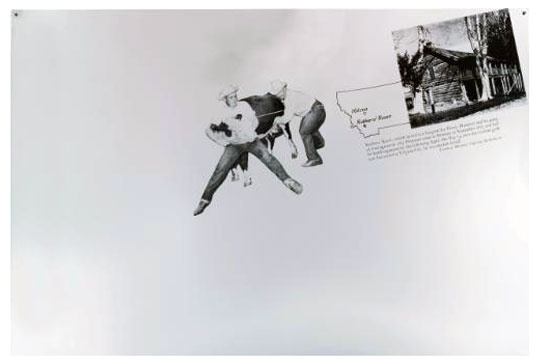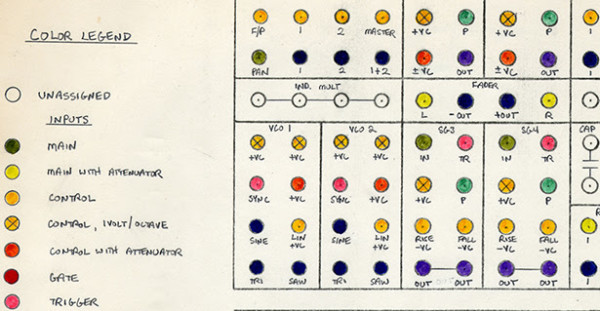Canceled: Alternative Manifestations & Productive Failures will be presented within the exhibit Cookbook Dreams and Inflatable Futures, curated by Arts & Sciences projects at the Reinstitute/Guest Spot art space in Baltimore. For this exhibit, “Canceled” has been presented as an artist project & archive of itself. This is a nice thing about making shows that can exist on a book shelf or in a big white space.
More info on the show at Guest Spot, and on Arts & Sciences projects.

Cookbook Dreams and Inflatable Futures
Antoine Lefebvre, Robin Cameron, Cybele Lyle, Luca Antonucci, John Bohl, NOWORK, and Lauren van Haaften-Schick
On view: March 8, 2014 through April 19, 2014
Opening Reception: Saturday, March 8, 2014, 7-10pm
Guest Spot at THE REINSTITUTE (Baltimore) is pleased to present Cookbook Dreams and Inflatable Futures, a group exhibition organized by Arts & Sciences Projects. Opening Saturday March 8, 2014, the works will be on view through April 19, 2014. The show will feature artists’ books and works in other media by Antoine Lefebvre, Robin Cameron, Cybele Lyle, Luca Antonucci, John Bohl, NOWORK, and Lauren van Haaften-Schick.
Inspired by Ant Farm’s 1971 Inflatocookbook, which envisioned a utopia of DIY inflatables within its humble photocopied pages, Cookbook Dreams and Inflatable Futures brings together artists who concoct varied approaches to circulating and advancing concepts and ideas central to their practice through innovative means of book making and distribution. For these artists, books are conceived as alternative spaces in which to exhibit works to a broader audience; they embrace a process-oriented approach to book making, where dialogues are revealed between books and works in other media, including photography, prints, video, and painting. The assembled artists in Cookbook Dreams and Inflatable Futures not only utilize the book as a vehicle for their ideas, they also position the book as an art object, thus challenging notions of assigned value in contemporary art. In making a diverse range of books, these artists assert agency by choice of content, form, materials, and production values. What unites the artists in the show is the realization of the boundless possibilities of books as they enter circulation, free to establish a life of their own.
Antoine Lefebvre initiated La Bibliothèque Fantastique (LBF) in 2009 as an artist’s book virtual publisher. Free and downloadable from the internet, LBF books are made of excerpts of other works, with pages, sentences and words realized in new editions, thus developing a discourse on the ontology of the book.Robin Cameron’s The Book That Makes Itself exposes its own production through its content and form. By personifying the book itself, Cameron articulates her artistic practice as the subject (The Artist), agent and author. The collaborative practice of Cybele Lyle and Luca Antonucci reveals itself in their Space, Time + Architecture project, which includes the titular Sigfried Giedion tome in a highly redacted state, collaged photographs that imagine new conceptions of space, and a revised, letterpressed Space, Time + Architecturethat unites their ideas into a new form. John Bohl uses painting and sculpture to examine utopia, kitsch, and romanticism. Typically produced in collabration with other artists, his books may be seen as sculptural objects dialectically engaged with his paintings and works in other media. NOWORK is a platform for collaboratively produced, anonymous projects that relate to New York City, with a focus on photographic material in public spaces. Not citing individual authorship for their work has allowed them to treat their source material, whether taken or found, as part of an act of re-circulation. The problem of artistic agency features prominently in Lauren van Haaften-Shick’s curatorial practice, which considers a selection of art exhibitions manifested in alternative forms, such as publications. van Haaften-Schick’s work highlights the book form (and printed matter) as a crucial means of disseminating artworks and ideas, potentially in ways that are more historically accessible and lasting than a traditional exhibition would have been.
Guest Spot is located at 1715 N. Calvert Street, Baltimore, MD 21202
Hours:
Saturday 1pm-4pm
Wednesdays 5pm-7pm
or by appointment unless otherwise noted.
Contact
rodmalin(at)guestspot(dot)org










